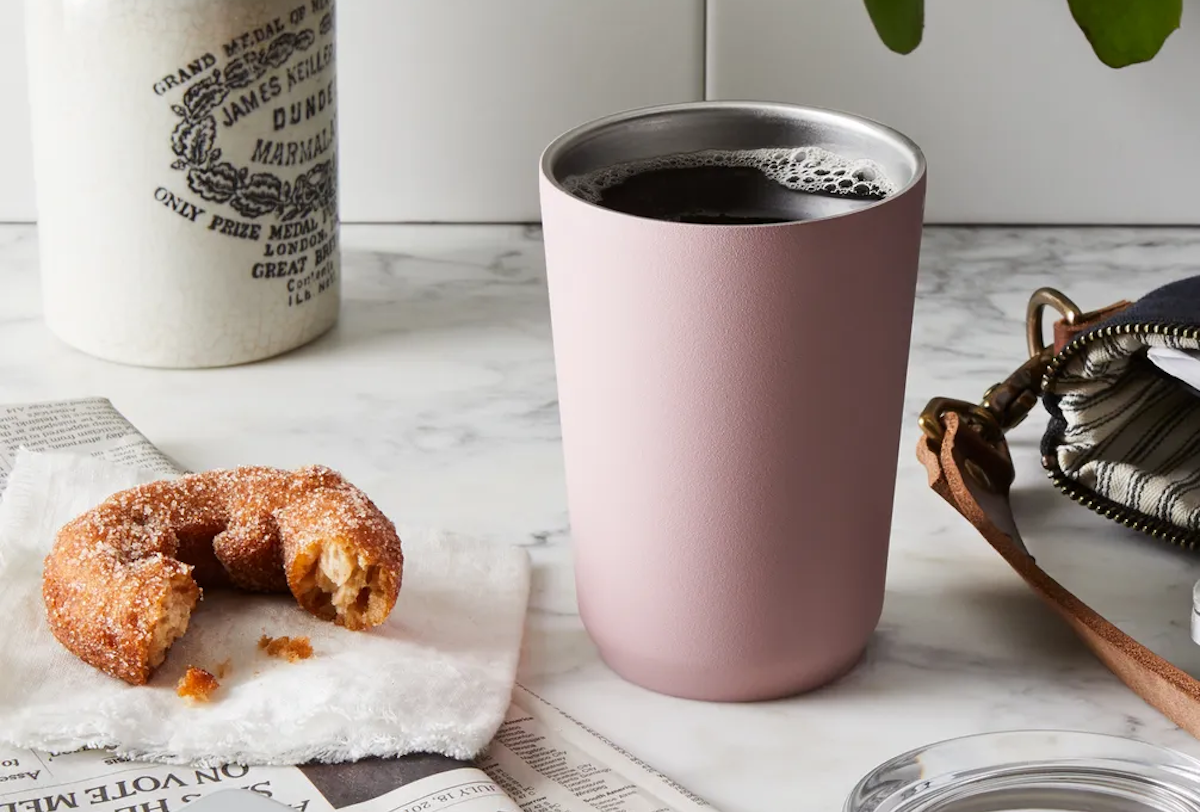When an appliance in your home is functioning as it’s intended, not many of us stop to perform the routine maintenance it needs, because um, hello? There’s a mile-long to do list for things that are a bit more urgent. Sometimes, though, all it takes is a few minutes and a little exploration of the appliance’s parts to discover that A. it’s gunkier and funkier than you’d care to admit and B. it actually runs a whole lot better now that you cleaned it. Unfortunately, even the most automatic of appliances in our homes (yep, dishwashers, washing machines, ovens) all need routine cleaning to function properly.
This is especially true when it comes to your coffee maker, which you probably use at least once daily. As it turns out, Keurigs and drip coffee makers can get mineral build-up in their inner workings, not to mention harbor all sorts of harmful bacteria (yeah, gross), which will not only make your brew taste weird, but will also compromise the lifespan of the appliance (and your health!).
For way too many years as a young adult, I didn’t bother cleaning my coffee machine. I know: It’s embarrassing. I just didn’t really understand why I had to. My coffee tasted fine (or so I thought), and didn’t it basically clean itself each time water ran through it?
But recently, thanks to an impromptu decision to deep-clean my kitchen appliances, my life changed forever. The next day, I was shocked at how much greater my coffee tasted!
Bottom line? If you can’t remember the last time you cleaned it, your Keurig probably needs to be cleaned (though, community member BeeBait suggests putting a post it on the back of the coffee maker with the cleaning date, much like an oil change sticker on your car). Here’s how to do it the right way — your mornings will never be the same again.
How to descale a Keurig
The process of cleaning the inner workings of a coffee machine is often called descaling. (“Scale” is another term for calcium deposits, which build up in the pipes of your Keurig over time.)
What you’ll need:
- White vinegar or Keurig descaling solution
- A large ceramic mug
- Lots of fresh water
Step 1: Prepare the machine
First, you’ll want to unplug your Keurig and take off the water reservoir. Empty it out, then remove the water filter.
Pro tip: Sync up your filter-changing schedule with your descaling schedule to make maintenance easier. Filters should be changed every two months or 60 tank refills.
Step 2: Fill the reservoir
If you’re using vinegar to clean your machine, fill the water reservoir about halfway with white vinegar, then fill the rest with water. If you’re using descaler, pour the whole bottle into the tank, then fill up the rest of the way with water.
Step 3: Run the machine multiple times
Plug your machine back in and turn it on. Place the ceramic mug underneath the spout, then start the brew cycle using the largest setting your cup can accommodate — the larger the cup, the faster the process will go. You’ll want to run these cycles without a K-cup in the machine.
Once the brew is finished, empty the cup into your sink, then run another cycle. Repeat until the water tank is empty.
Step 4: Let it rest
Let your machine rest for 30 minutes so the inner workings can soak. You can leave the power on for this step.
Step 5: Rinse with fresh water
Remove the reservoir and rinse it out. Fill it with fresh water, then run a few more cycles to remove any lingering vinegar taste.
If you’re using descaling solution, Keurig recommends running at least 12 more cleansing brews to ensure all the chemicals are removed. Wondering how often to descale a Keurig? The manufacturer recommends every three months.
Cleaning every part of your Keurig
It’s just as important to clean the outside of your Keurig. Here’s how to clean every part of your coffee maker:
Pod Holder
Remove the pod holder from the machine, and detach the bottom funnel portion. Use a paperclip to gently scrape any coffee grounds out of the tube on the pod holder, then wash both pieces with warm, soapy water.
Brewer Needle
The needle above the K-Cup holder has two holes at its base where water comes in. Gently insert a paperclip into each hole and move it around to dislodge any grounds or grime that may be blocking water flow.
Mug Stand
This piece is top-rack dishwasher safe, but you can also wash it by hand using warm, soapy water.
Reservoir
You should wash out your Keurig reservoir once a week using warm, soapy water. Let the interior of the tank air dry to avoid getting any lint particles in it.
Exterior
Wipe down any exterior parts using a soft cloth, dish soap, and warm water.
How to cleanse between cups
Have you ever noticed that if you make, say, a cup of hot cocoa in your Keurig, the next cup of coffee kind of tastes like chocolate? Flavors can carry over between brews, and if you want to prevent this, you need to use the Keurig Rinse Pods. They look just like regular K-Cups, but all they do is wash out any lingering flavors.
Keurig recommends using a Rinse Pod weekly. Just pop one into the machine and run an 8-ounce brew cycle. You’ll then want to run a cycle with fresh water before you make your next cup of coffee. Which, naturally, will be amazing.


